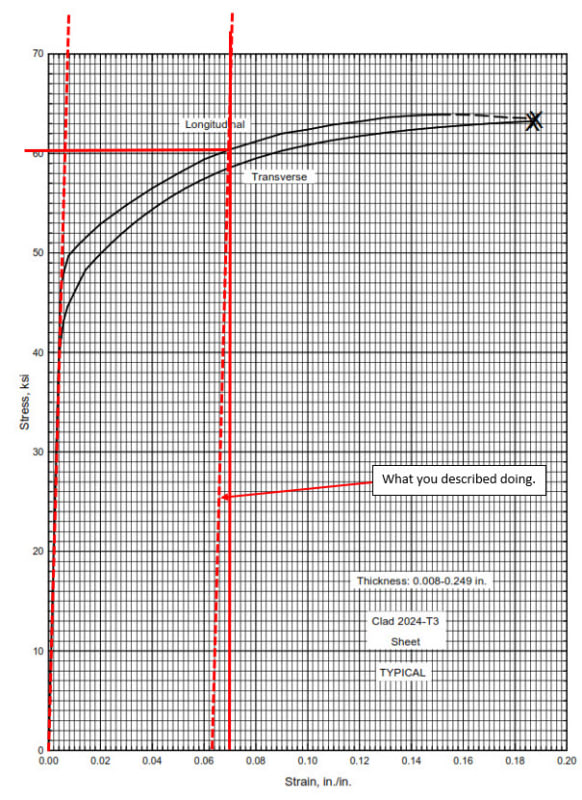Hi All,
i received a stress analysis done in abaqus and have a question as using Inventor Professional 2022 to do similar analysis. In the received report instead of the stresses it talks about residual plastic strains in the material. If i want to do a linear static analysis in Autodesk inventor software, is there anyway that i can find what linear stress is equivalent to the strains I’m getting from residual plastic strain? The plastic strain reported that under load the strain is 0.07 and material wont collapse. the material is aluminium with Young modulus is 70 GPa. Is it correct that I say if i draw a line with the angle equivalent to young modulus on stress-strain curve and crossing the strain of 0.07, it would be my linear stress equivalent to plastic analysis?
actually, i m looking to find what maximum stress i need to aim to in my linear analysis to have the same strain in the material as was done in abaqus analysis. thanks in advance,
i received a stress analysis done in abaqus and have a question as using Inventor Professional 2022 to do similar analysis. In the received report instead of the stresses it talks about residual plastic strains in the material. If i want to do a linear static analysis in Autodesk inventor software, is there anyway that i can find what linear stress is equivalent to the strains I’m getting from residual plastic strain? The plastic strain reported that under load the strain is 0.07 and material wont collapse. the material is aluminium with Young modulus is 70 GPa. Is it correct that I say if i draw a line with the angle equivalent to young modulus on stress-strain curve and crossing the strain of 0.07, it would be my linear stress equivalent to plastic analysis?
actually, i m looking to find what maximum stress i need to aim to in my linear analysis to have the same strain in the material as was done in abaqus analysis. thanks in advance,

